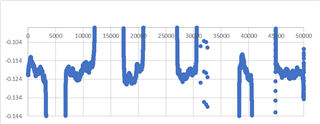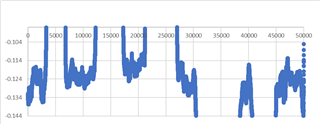Other Parts Discussed in Thread: TMAG5170
Hi,
I wish to use this magnetometer for an application where it will be approached by a neodymium magnet of type n52.
I have tested exposing this magnetometer to the n52 magnet and it seems that the magnetometer loses its calibration. Indeed, I compared the raw magnetometer values before and after the exposure and I observed an offset drift on the Y and Z axes.
What is the maximum magnetic field strength that must not be exceeded to maintain the metrological characteristics of this sensor?
I did not find this information in the datasheet, nothing is mentioned in the Recommended Operating Conditions section.
Is anyone have an idea? Thank you.







